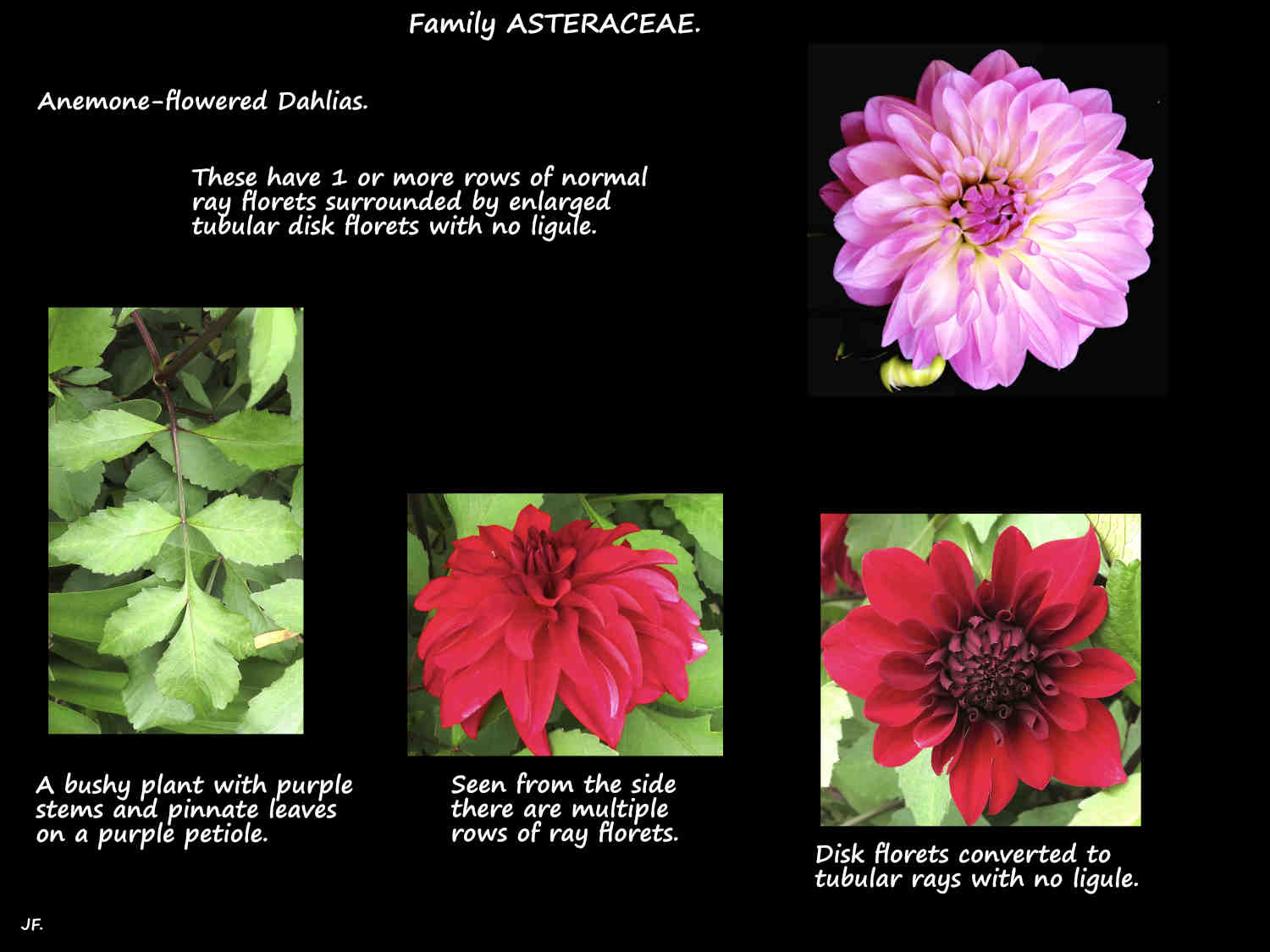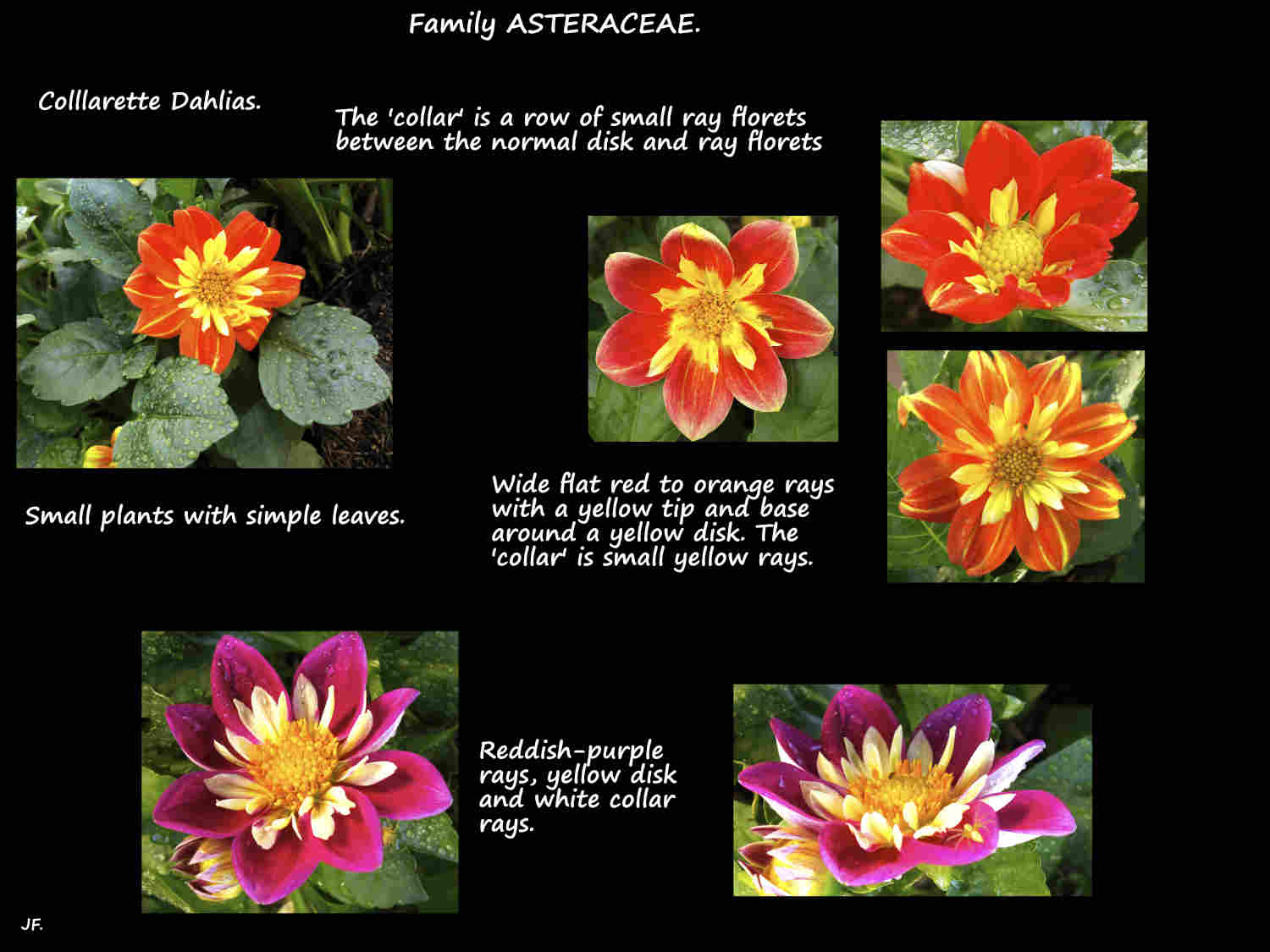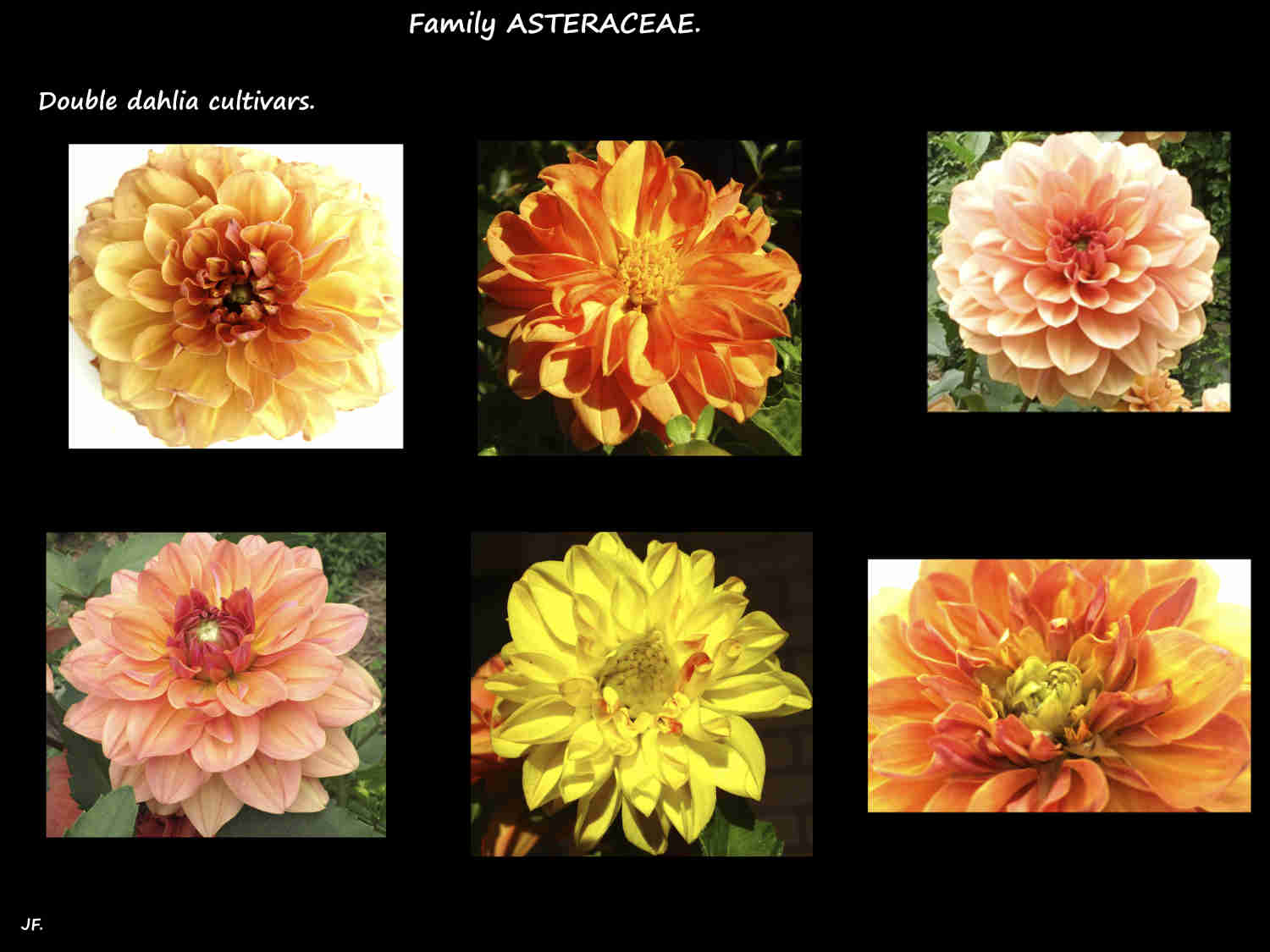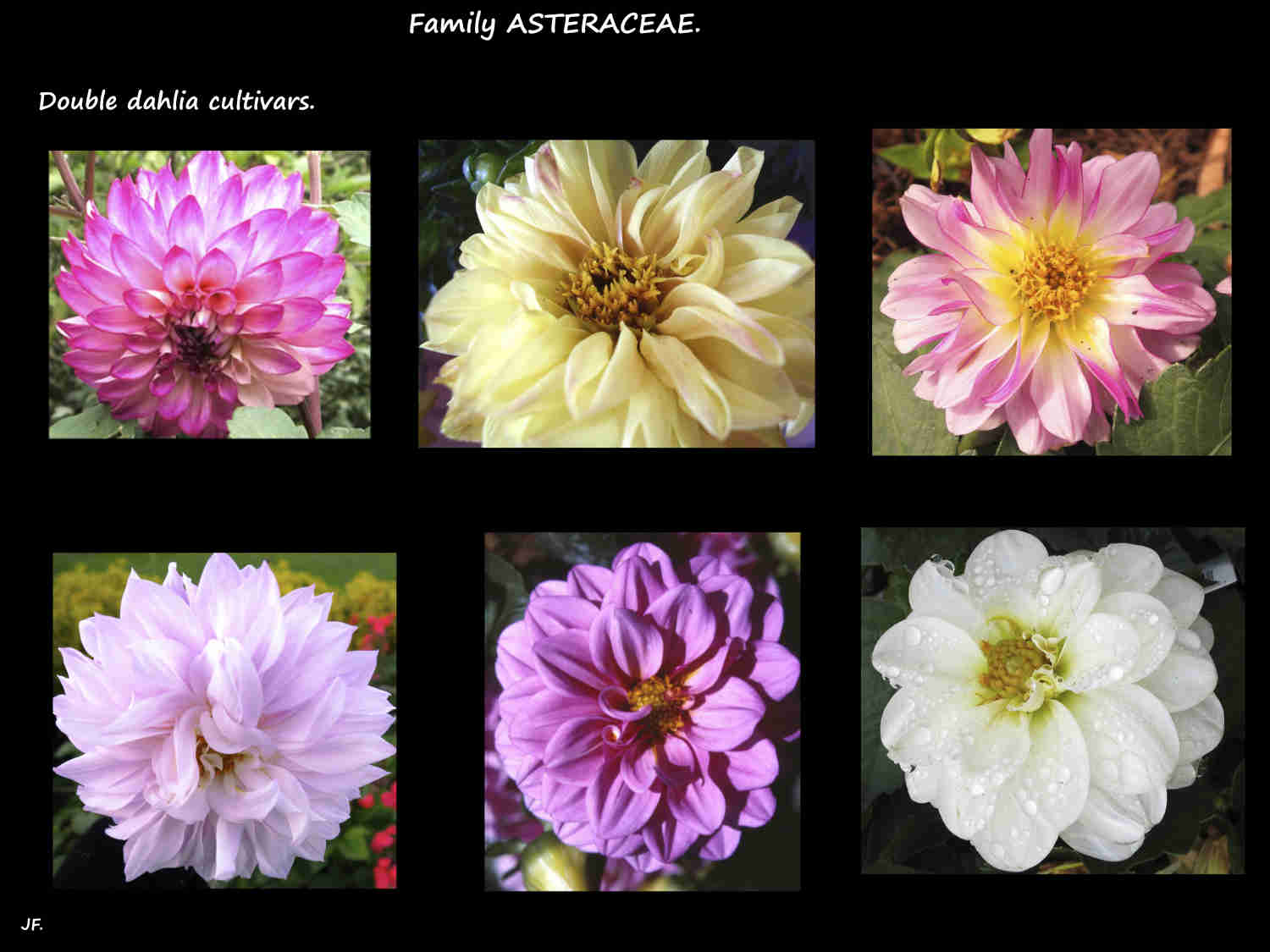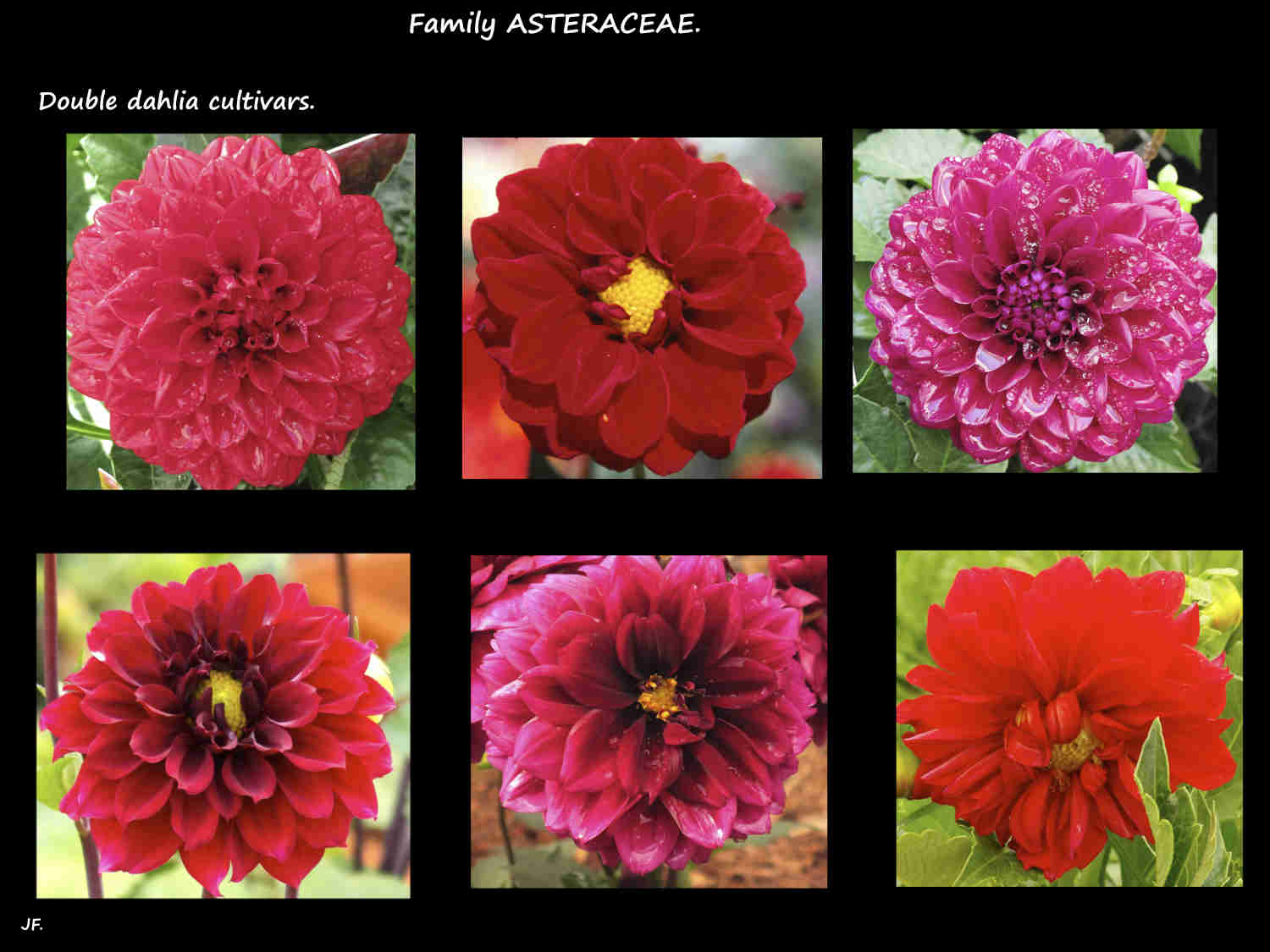Dahlia x pinnata.
From Mexico, the Common or Garden Dahlia is the type species for the genus.
Erect, sparsely branched perennial herbs up to 1.5 m high they have tubers on the roots and hollow green or reddish-purple stems.
The oppositely arranged leaves are on petioles with a grooved upper surface and their wider bases meet around the stem.
Leaves, up to 15 cm or more long may be simple but are commonly once or twice irregularly divided into ovate leaflets with or without a petiolule.
Leaflets have a pointed tip and teeth on the whole edge or just near the tip.
Terminal inflorescences are usually a single flower head or capitulum on a long bare peduncle.
Up to 25 cm across heads have both ray and disk florets.
The outer whorl of thick green involucral bracts have prominent veins and the slightly longer and thinner 1 cm inner bracts have a thin membranous edge.
The around 8 sterile female ray florets have a corolla tube with a ligule up to 5 cm long.
The white, yellow, red, orange, purple or red rays have a slightly lobed tip and the disk florets are yellow or purplish.
**********************
Dahlia cultivars.
Almost all of the Common dahlias, the ones almost exclusively seen as cut flowers or garden plants are hybrids and cultivars of D. pinnata, D. coccinea and D. rosea. Although described as species probably all are hybrids dating back over 200 years.
D. pinnata, the most common parent is probably more accurately named D. x pinnata.
Cultivars have been developed by crossing plants of the same or different species then crossing these back with any of the parents or other cultivars etc. Often one or both parents of new cultivars are unnamed cultivars themselves.
Instead of the normal 2 sets of chromosomes (2n) hybrids can have up to 8 sets (8n) or sometimes just parts of sets indicating their complex origin.
The oldest dahlias described, from Mexico, were a mix of single and doubles but hybridisation has been focused on the doubles.
An international registry for Dahlias has over 55,000 named cultivars.
Many Dahlia Societies and horticultural groups have their own classification of cultivars but the internationally recognised body is the Royal Horticultural Society which divides cultivars into 14 groups, and 1 miscellaneous, based on the morphology of the flower heads.
Nine types of heads have distinctive features and are fairly easy to identify. These include:
Ball dahlias have ray florets with spirally arranged edges, rounded tips and at least 75% of the edge rolled inwards.
The smaller Pompom dahlias, with heads less than 5 cm across, have the edges of all the ray florets rolled inwards for the whole length.
Fimbriated dahlias have the tips of all the variously shaped rays evenly notched or split giving the appearance of a fringe.
Single dahlias have 1 row of ray florets that may overlap giving the impression of being doubles.
Single Orchid or Star dahlias have the edges of the single row of rays rolled inwards or back (involute or revolute).
Collerette dahlias have a row of small rays (the collar) between the normal disk and ray florets.
Double Orchid dahlias have narrow lance-shaped rays with involute or revolute edges.
Anemone-flowered dahlias have 1 or more rows of normal rays and all the disk florets replaced by rays having long corolla tubes with no ligule.
The rest, all doubles, are more difficult to distinguish as they are differentiated largely by the shape of the ray floret ligules.
Decorative dahlias are doubles whose broad flat rays have ligules that are involute for up to 25 % of their length.
Ligules, usually with a rounded tip are slightly twisted and there is no visible disk.
Cactus dahlias are doubles with most of the pointed rays having revolute edges for more than half their length.
Semi cactus dahlias are doubles with rays that are revolute for between 25 and 75% of their length.
With a wide base and very pointed tips they are almost spiky in appearance.
Peony-flowered dahlias have large heads with three or four rows of irregularly arranged rays with wide flat ligules around a yellow disc.
Waterlily dahlias are doubles whose few rays have wide ligules that are flat or only slightly curved.
They are shallow heads whose thickness is less than half their width.
J.F.

